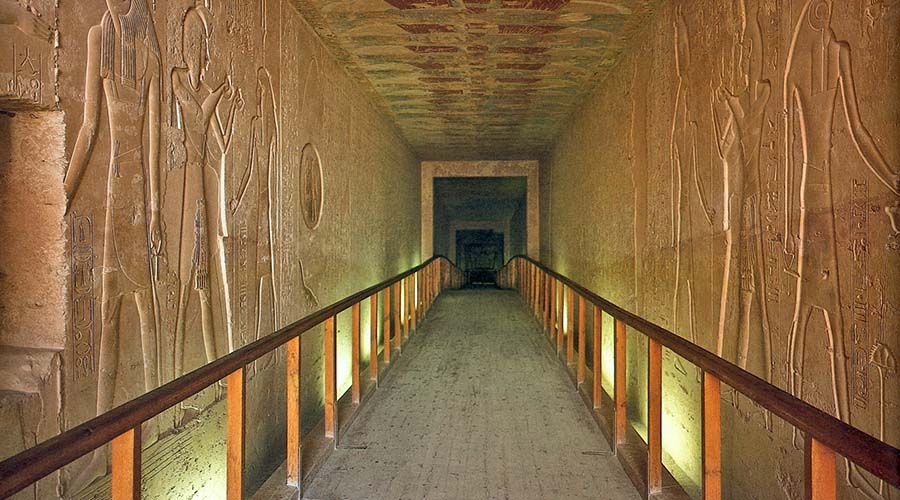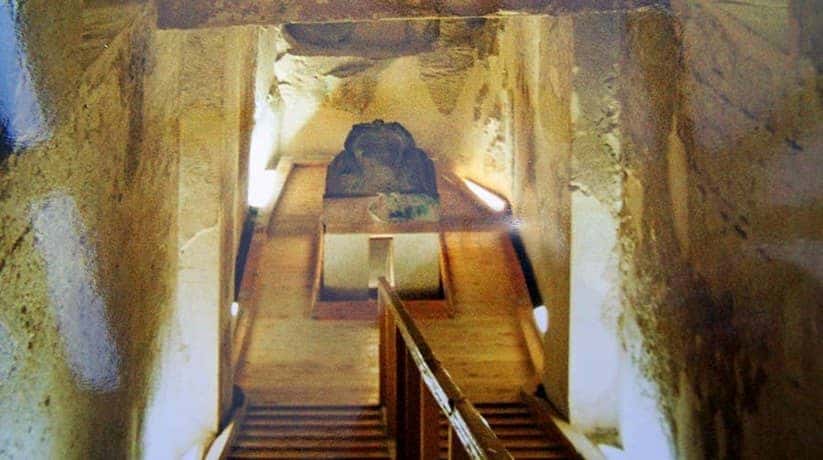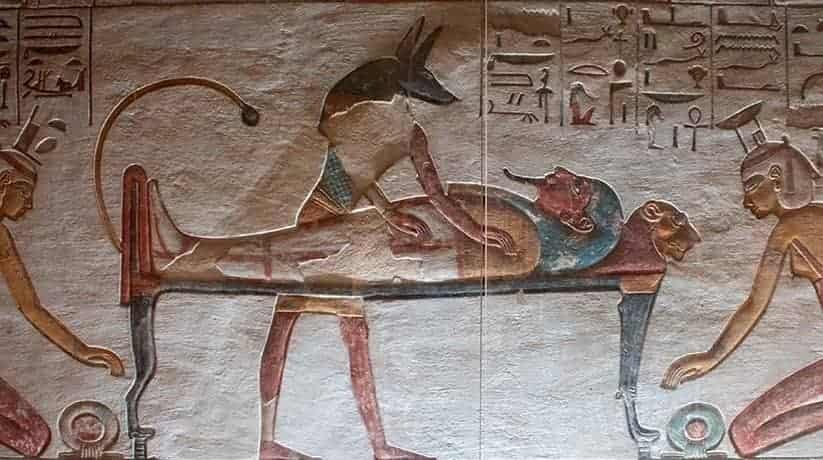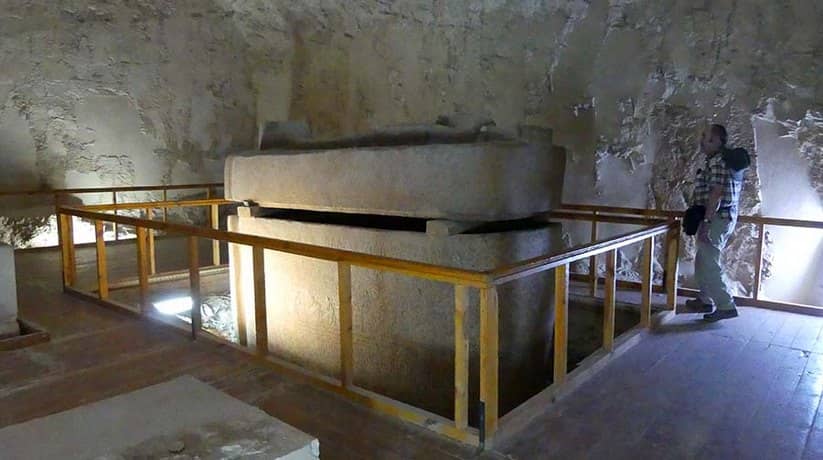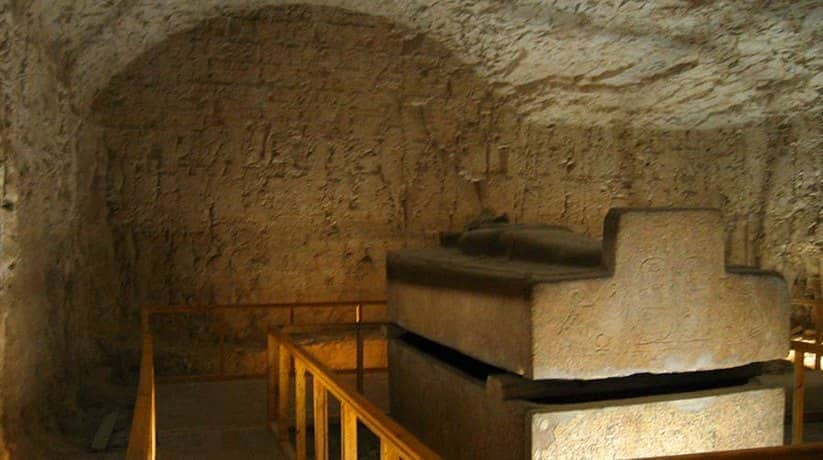Siptah tomb Luxor KV 47 Egypt tours, prices, booking, reviews
Siptah tomb Luxor found on the north face of a hill. The hill divides the southeast and southwest branches of the central wadi. It is within the Valley of the Kings on the West Bank at Luxor (ancient Thebes). In fact, It oriented north-south running straight for a distance of 114.04 meters into the hill. It also reaches a depth of about 13.12 meters. In fact, the name of Siptah means “Son of Ptah, Beloved of Ptah”. Moreover, King Siptah was the son of Seti II and Queen Tiaa. This throne name was Akh-en-re Setep-en-re, meaning Beautiful for Re, Chosen by Re. He not chosen, for he suffered the deformity of a club foot. His reign lasted from about 1193 until 1187 BC.
Like his father we know precious little about Siptah, though perhaps, there is little for us to know. He was also the seventh ruler of Egypt’s 19th Dynasty. Though in fact he may have never actually ruled at all. Moreover, he was also the second son of Seti II, by Tiaa, a relatively minor queen. He came to the throne because his older brother, Seti-Merneptah, died before the death of Seti II. He inherited the throne while still a minor. It was his stepmother, Tausret, along with her Chancellor who actually controlled Egypt. It was during the kings short life. In fact, Siptah seems to have died in the 6th year of his reign. It was after which his stepmother took full royal titles.
Further details about Siptah tomb Luxor:
Siptah tomb Luxor discovered by Edward Ayrton on December 18th, 1905. It was while working for Theodore Davis. He noted that the debris in the entrance had dug out, creating a passage. The passage filled back up. He felt that the likelihood of finding anything of interest would be slim. It was because of the bad condition of the rock. He only excavated down to the antechamber. In 1912, Harry Burton excavated Siptah tomb for Davis. He also worked between the four pillared chamber and up to and including the the burial chamber. Yet the tomb never completely cleared until 1994. In addition, Howard Carter cleared the area around the tomb in 1922. He discovered a few objects belonging to the tomb.
In fact, the first part of Siptah tomb Luxor structure follows that of his father, Seti II. The rear sections are somewhat unusual. Furthermore, the initial opening corridor leads into the tomb. It is in the open air. It also consists of a central ramp with two stairways of cut stone blocks. They embedded into the bedrock to either side of the ramp. The first true corridor descends, leading to a second level corridor. Moreover, we find a pair of beam slots used for lowering the sarcophagus. This corridor gives way to a third corridor that, like the first, descends once more. Furthermore, at the rear of this corridor are a pair of rectangular niches. Afterwards, we find the well room that lacks a shaft. It also followed by a four pillared chamber.
More details about Siptah tomb Luxor:
Siptah tomb Luxor continues through the pillared chamber with a descending passage. It leads into the first of two more level corridors. It is before communicating with an antechamber. A final wider corridor leads past two abandoned lateral corridors. It is before giving way into the unfinished, transverse burial chamber. A granite sarcophagus set into an roughly finished rectangular niche in the floor. It is just behind a transverse row of four pillars. Lateral corridors abandoned. They maybe meant to give into a burial chamber or storage annexes. But this work stopped after the a corridor broke into the nearby tomb, KV 32. The openings then sealed with limestone slabs.
No decorations remain beyond the first four pillared chamber. The little exist beyond the second, level corridor. Siptah tomb Luxor also suffered the fate of KV 15. The cartocuhes of the tomb owner removed, and later re carved. No one knows who destroyed the cartouches and no one know who restored them. The process revolved around the rivalry of Ramses II’s descendants . Their quest for the throne after the death of Merenptah. On the lintel above the doorway to the first true corridor is usual scene. It depicts a scarab and ram headed god flanked by Isis and Nephthys.
More details about the tomb of Siptah in Luxor:
On the outer thickness and reveals of the door jambs found the name of the deceased king. It is along with inscribed prayers to the sun god and Osiris. On the inner thickness of the door jambs is a depiction of the goddess Ma’at. It winged and kneeling on baskets. It supported by the heraldic plants of Upper and Lower Egypt.
Inside this corridor on the northeast wall, a well preserved depiction of Siptah. It addressing Re-Horakhty followed by the opening lines of the Litany of Re. Further text and scenes from these passages fill the rest of this wall. They include a scene of Anubis before the bier of Osiris. And then flow into the next corridor. On the ceiling of this first corridor we also find representations of a series of flying vultures. On the ceiling of this corridor found the best preserved depiction of Isis and Nephthys. It is as kites to either side of the soul of Re.
Entrance to Siptah tomb Luxor:
Siptah tomb Luxor is currently open to visitors. Tickets for the Valley of Kings cost 200 Egyptian pound for three Tombs and can bought at the gate. Photography inside the tombs strictly forbidden and can incur heavy fines. There is a little train – Taftaf – runs from the coach park to the entrance of the monument area. It costs 5 Egyptian pound.

